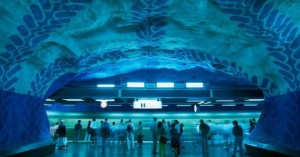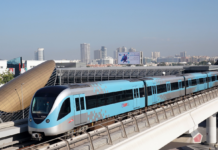By Edwin Heathcote www.ft.com
The metro is a parallel city, a subterranean network of tubes and cables that mirrors the complexity of the city above, a system of veins and arteries hidden beneath the skin of the street and pumping urban lifeblood.

London’s Underground was the first. The Metropolitan Railway (lending its name to all that followed) opened in 1863, its locomotives spewing smoke into sooty, brick-built tunnels.
The Underground has become a part of London’s mythology, a symbol of its resilience. It served as a shelter from the Blitz but also as a catacomb for victims of the 7/7 bombings and, in that dual role as womb and tomb, it finds its unique blend of familiarity, ennui and claustrophobia.
Tokyo’s subway, fiercely efficient and exemplified by its white-gloved people-squeezers, had its sarin gas attacks. New York’s massive and once decrepit and dangerous system became a cipher for crime and the bankrupt megacity; its rebirth a symbol of the city taking back control. Yet we move on; underground, the subway can subsume and sublimate our fears – we continue as if nothing had ever happened.
At its best, a metro offers a city a subterranean subconscious, a mirror image of itself. Hector Guimard’s sinuously organic Art Nouveau ironwork for the Paris Métro announces the presence of a station – art runs through the city’s veins – and the artist’s sign has become the symbol of the city itself, as have London’s roundels.
Moscow’s astonishing Stalinist stations became palaces of the proletariat, fairy-tale commuters’ balls lit by sparkling chandeliers. Stockholm’s Tunnelbana appears as a network of caves, hewn from the rock and painted with endlessly engaging verve.
Munich’s vividly coloured U-Bahn is an underground art gallery and, while Bilbao’s rebirth is usually credited to the Guggenheim Museum, it was the elegant glass hoods of the Basque city’s Metro system, designed by Norman Foster, that truly animated the city.
From Shanghai to Dubai, cities are only allowed to become real once they have dug deep enough within themselves to make themselves truly metropolitan.

















